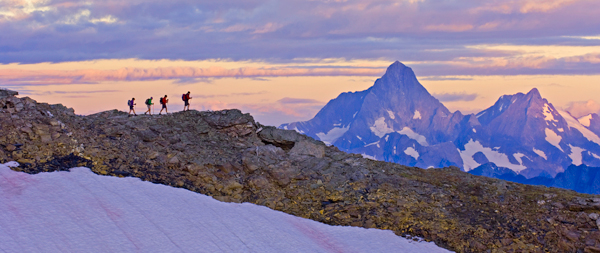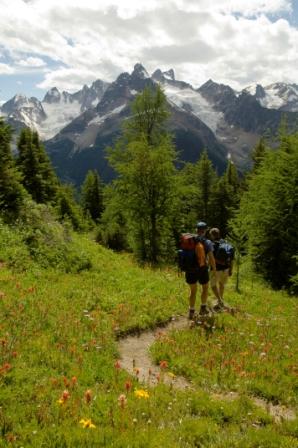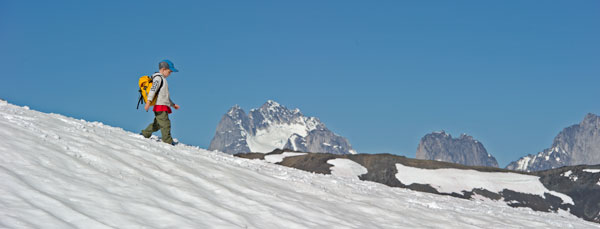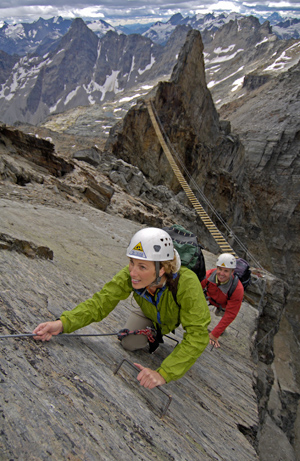Orginally Topher Donahue on Fri, May 21, 2010
One of the surprising elements of CMH Summer Adventures is that most of our time is spent with no trail in sight. Sometimes the bears, moose, and other animals go the same way we want to go, and then we can follow age-old animal trails for short distances. The rest of the time we walk gently on carpet-like tundra dotted with tenacious wildflowers, across scree slopes made of billions of tiny rocks, over chaotic boulder fields of burly talus, through lush old-growth forests, on low-angle slabs of ancient stone, and everything in between.

With groups of adventurous hikers, we’ll encounter all of these terrain features in a single day. With hikers wanting only the easiest hiking, we use the helicopter to access the ideal, mellow terrain.
For everyone, hiking off-trail requires paying attention and walking with a focus beyond that which we are accustomed to while hiking on well-used trails in National Parks and popular recreation areas. For some suggestions on better walking off-trail, I asked Erich Unterberger, an IFMGA guide and lifetime adventurer who, beginning as a kid in Austria, has spent most of his life in the wilderness, away from any trails or roads, while wearing hiking boots, rock climbing shoes or skis. Erich took time away from building his family a house in Revelstoke, British Columbia to give us some pointers, and here’s what he had to say:
As for walking off-trail, I don’t know when I last walked on a trail. I think I always walked, or looked to walk, off the beaten path.
- What I look for when I’m off-trail is safety first. I always check for any hazard above like loose boulders, cornices, etc.
- You want to make sure to avoid sensitive areas like marshy places or heather slopes.
- Pick your line from a distance – almost any peace of terrain has a path of least resistance through it.
- When you are crossing a steep side-hill, point your downhill foot outward to minimize stress on your ankles.
- When crossing talus or scree slopes, you need to look a few steps ahead. This gives you better balance.
- Take small steps. This makes covering ground easier and more efficient.
- I often use a walking stick which comes really handy for rugged sections and makes walking downhill much easier.
Exploring off the beaten path is one of the most rewarding aspects of mountain adventures. The CMH guides will outfit you with the needed equipment, like boots and walking poles if needed. Most importantly, they cutomize each adventure to ensure that you get just the right kind of experience to be safe, exciting and eye-opening for you without it being too difficult for your ability and fitness level.
Heli-hiking photo by Topher Donahue



